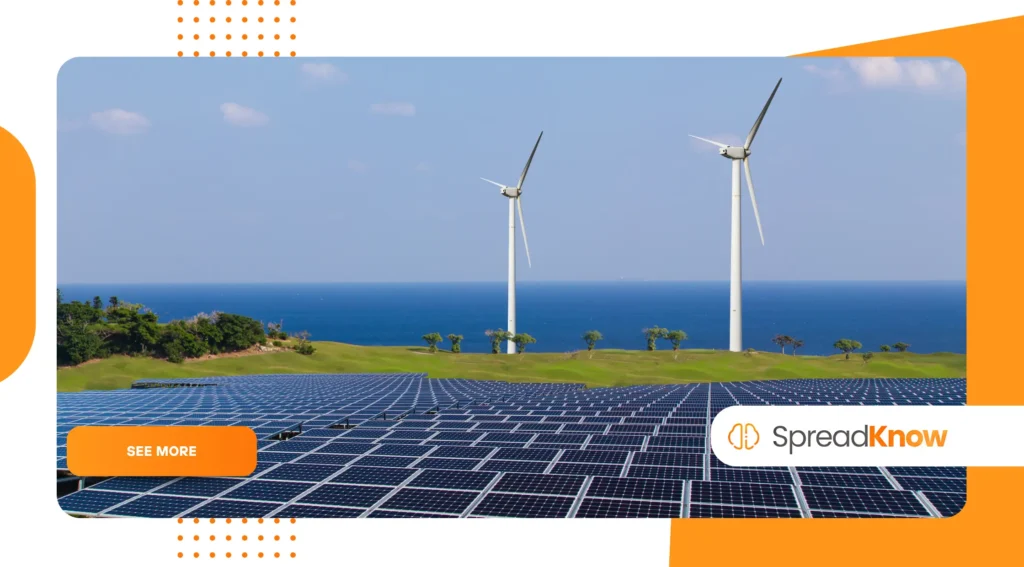A Transição Verde: Como a Energia Renovável Está Remodelando as Economias

Energia renovável is no longer a futuristic ideal — it has become the defining engine of economic transformation in the 21st century.
Anúncios
Across continents, governments, corporations, and citizens are rethinking how power is produced, distributed, and consumed.
This transition is not merely about replacing fossil fuels; it represents a profound restructuring of industries, labor markets, and geopolitical dynamics.
From vast offshore wind farms in the North Sea to expansive solar deserts in Morocco and the American
Southwest, the global shift toward sustainable power is driving new forms of investment and innovation.
Anúncios
The green transition is as much about economic reinvention as it is about environmental preservation.
The Rise of Renewable Energy in the Global Economy
Two decades ago, renewable sources were considered supplemental — clean but costly alternatives to coal and gas.
Today, thanks to technological advances and falling production costs, they have become central to national energy strategies.
The International Energy Agency (IEA) reported that renewables accounted for nearly 30% of global electricity generation in 2024, a number expected to surpass 40% by 2030.
This momentum has turned energy policy into a growth engine. Nations are competing to attract capital, establish manufacturing hubs for green technologies, and secure dominance in the supply chains of critical minerals such as lithium and cobalt.
The world’s economic map is being redrawn along clean energy lines.
++ Finanças sustentáveis: como a tecnologia está impulsionando investimentos verdes
Technology and Innovation as Catalysts of Transformation
Innovation has accelerated the adoption of Energia renovável far beyond expectations.
Solar panel efficiency has tripled in the last 15 years, while the cost of lithium-ion batteries has dropped by over 80%, making electric vehicles and large-scale storage feasible.
Countries that invest heavily in research and infrastructure are leading the charge. Denmark, once reliant on imported oil, now sources more than 70% of its power from wind.
China dominates the production of photovoltaic panels, while the United States is expanding offshore wind and advanced grid technologies.
Institutions such as the International Renewable Energy Agency (IRENA) highlight how innovation not only reduces emissions but also stimulates employment across sectors like construction, engineering, and logistics.

Economic Opportunities and the Green Job Boom
The shift toward renewables has unleashed a wave of job creation. The renewable energy sector now employs over 13 million people globally, according to a 2023 IRENA report — a figure projected to double by 2030.
These positions range from solar installers and wind turbine technicians to data analysts managing smart grids.
The reindustrialization driven by clean technologies is particularly transformative for developing nations.
Countries such as Brazil, India, and Kenya are emerging as key players in bioenergy, solar, and geothermal production.
As global markets evolve, these nations are carving sustainable economic identities built on self-reliance and innovation.
| Setor | Global Jobs (2024) | Projected Jobs (2030) |
|---|---|---|
| Solar Energy | 5.5 million | 9 million |
| Wind Power | 2 million | 4 million |
| Bioenergy | 3.5 million | 5 million |
| Hydro & Geothermal | 2 million | 3 million |
This table underscores a broader truth: the green transition is not just an environmental imperative — it is an employment revolution reshaping the social fabric of nations.
++ Vida sustentável: mudanças simples para um estilo de vida mais verde
Geopolitics and the New Energy Power Map
A ascensão de Energia renovável is altering geopolitical power balances long dominated by oil and gas producers.
Energy independence has become both a national goal and a strategic asset. Europe’s accelerated investment in renewables after the 2022 energy crisis demonstrated how sustainability and security are now inseparable.
Nations rich in sunlight, wind, and rare earth minerals are gaining newfound influence. Morocco, for instance, is positioning itself as a solar powerhouse, exporting clean electricity to Europe through undersea cables.
Enquanto isso, o U.S. Department of Energy projects that renewable infrastructure could cut American oil imports by 60% within a decade, reducing exposure to global market shocks.
This redistribution of energy power is fostering new alliances centered on green trade, technology transfer, and carbon-neutral commitments.
Challenges and Inequalities in the Green Transition
Despite its promise, the global shift is not without friction. The manufacturing of renewable technologies still depends on mining and globalized supply chains that can perpetuate inequality.
Moreover, the transition risks leaving behind communities reliant on fossil fuel industries. Managing this transformation fairly is one of the defining challenges of modern policymaking.
Developed nations are being urged to assist lower-income countries in building renewable infrastructure through initiatives such as the UN Sustainable Energy for All.
Without equitable financing, the global green transition risks becoming a tale of dual economies — one decarbonized, the other dependent on legacy fuels.
++ Por que a higiene digital é o novo autocuidado
The Financial Sector and Green Investment Flows
Capital markets are rapidly adapting to sustainability imperatives. Green bonds and climate-focused funds have surpassed $2 trillion in global value, signaling a structural shift in finance.
Investors are increasingly prioritizing environmental, social, and governance (ESG) metrics, viewing them not as optional ethics but as fundamental to long-term profitability.
Central banks and policy institutions are also reorienting monetary frameworks to support decarbonization.
From the European Investment Bank’s climate mandates to private equity pouring into clean startups, financial ecosystems are aligning with a renewable future.
This synergy between finance and sustainability marks a new chapter in global capitalism — one where profitability and planetary health may finally converge.
Innovation, Storage, and the Next Frontier
Energy storage is the linchpin of the renewable era. While solar and wind provide abundance, they are inherently intermittent.
Advances in hydrogen, solid-state batteries, and smart grid systems are bridging that gap, enabling stability and scalability.
Hydrogen, in particular, is emerging as a versatile fuel that could decarbonize heavy industries like steel and cement.
Japan and Germany are pioneering hydrogen corridors, while Australia and Chile are investing heavily in export facilities. These innovations will define the next stage of energy independence and economic resilience.
Toward a Sustainable and Inclusive Future
The world is entering a phase where Energia renovável defines prosperity. Beyond cleaner air and reduced emissions, it represents a philosophical shift — a redefinition of progress itself.
Economies built on infinite extraction are giving way to systems rooted in regeneration, circularity, and shared benefit.
The nations that embrace this ethos early will not only lead in technology but also in social stability, global influence, and economic equity.
The green transition, though complex, offers a rare convergence of moral purpose and financial opportunity — a foundation for a new global paradigm.
Perguntas frequentes
1. How does Renewable Energy impact job creation?
It generates millions of new jobs across diverse fields, including manufacturing, engineering, and installation, while revitalizing local economies worldwide.
2. What are the main challenges of the green transition?
Key obstacles include supply chain dependencies, financing for developing nations, and equitable transition for fossil fuel-dependent regions.
3. How does Renewable Energy affect geopolitics?
It redistributes power away from oil-rich countries toward those with abundant natural and technological resources, fostering new alliances.
4. Which technologies are driving future growth?
Hydrogen production, energy storage, and advanced grid systems are among the most promising innovations shaping the next phase of global sustainability.
